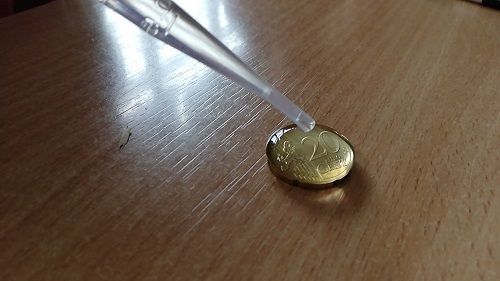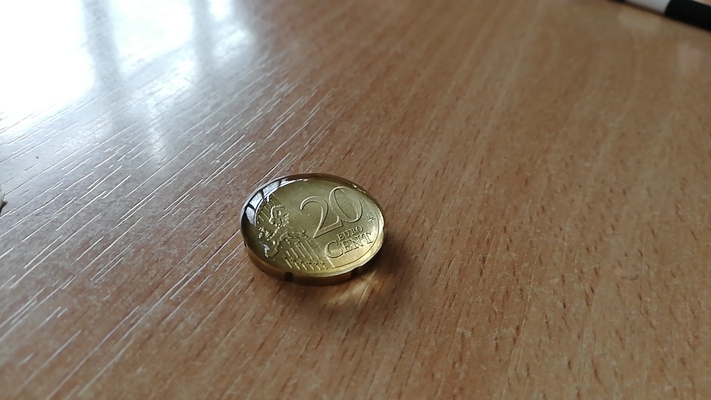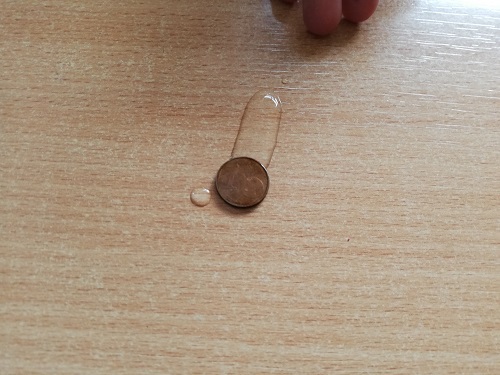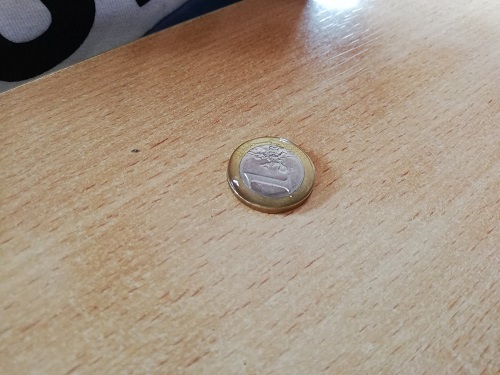Experiment whit water (4b class, teacher Aurelija)
Permanent markers, like Sharpie makes, rely on inks with a strong adhesive to stick to almost any surface you write on. But dry erase markers use inks with a minimal adhesive, making notes and drawings that can be easily wiped away afterwards.
The ink in dry erase markers is also insoluble. That means it can’t be dissolved in a liquid, and more importantly, it means it’s less dense than water. When you pour water onto a dry erase word science on a smooth surface (Plate for the Dollar store), a strong buoyancy force overcomes the stickiness of the ink, pulling the word science off the surface and causing it to float on the water.
Students like to eat a snow. It seems so white. Is it really so clean? (2c class, teacher diana K.)
Student took snow in 4 places in the school theritory, melted it and filtered. The result is in the picture.
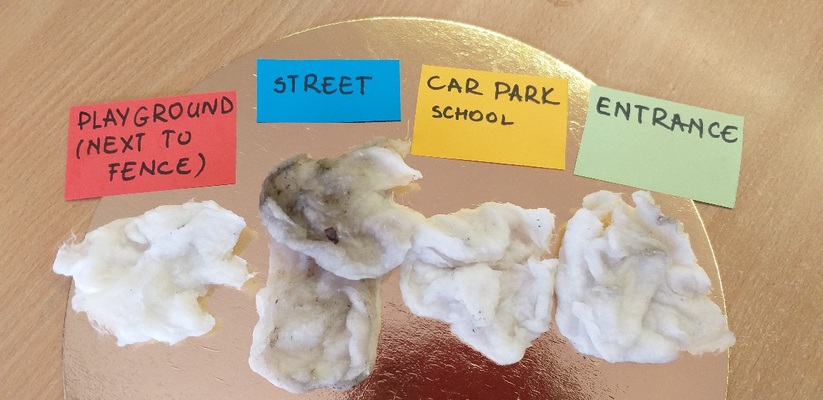
Experiment with colours and water. 2c, "Juventos" progymnasium (teacher Diana K.)
Students draw lines on the coffee filter ant put it into the water. Water helped to spread the colours and students can see the colour spectrum.
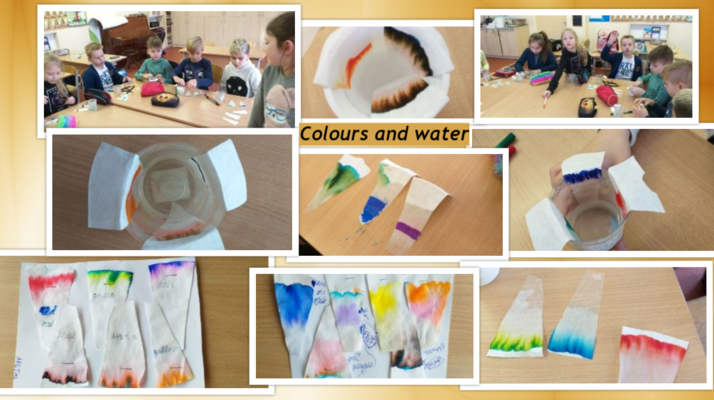
Christmas is time to guess your future. 2c did it using water.
2c students made ery interesting experiment with different kinds of markers and water. What is happening when you write on the plate with whiteboard marker, drawing marker and permanent marker? First guess, then watch our video.
-----------
Cool Magic Toothpick Trick (4b class)
Here is a super fun toothpick trick: turn broken toothpicks into a star!
This science experiment is simply magical.
See how the toothpicks glide into place to form a star right before your eyes.
What you need
4 wooden toothpicks
a dropper or a drinking straw
water
Steps
Bend the 4 toothpicks in the middle but do not break them completely.
Put the 4 broken toothpicks in a circle with the broken points touching one another.
Carefully put a few drops of water in the middle using a dropper or a straw.
Now wait and watch how the toothpicks glide into place to form a star!
Toothpicks are made of dry wood.
When dry wood absorbs water, the bent wood fibres expand and unbend. As the toothpicks straighten out, they push against one another opening up the inside of the star.
But how does wood absorb water?
Wood absorbs water by capillary action, adhesion and cohesion.
These are the same factors that allow plants to carry water from the roots upwards through vein-like tubes to the leaves.
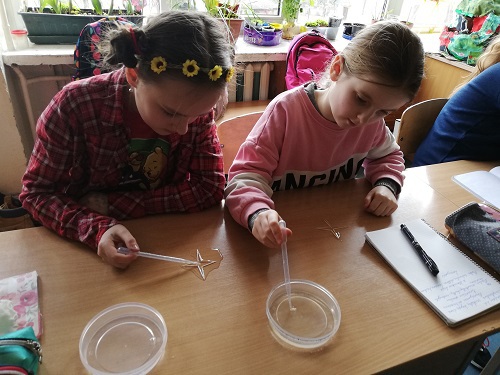
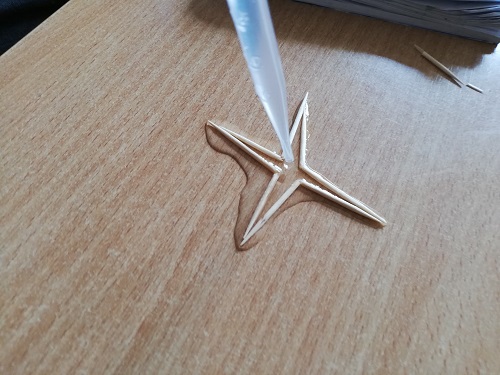
Surface Tension Water Experiment – Water Drops On A Penny (4b class)
Here is a STEM challenge for you: how many drops of water can you put on a penny?
What you need
water
a dropper or pipette
coins
Steps
Using the dropper, carefully put a drop of water in the center of the coin.
Keep adding water one drop at a time and keep count.
You will see a dome shape start forming by the puddle of water.
Stop when the water spills over the coin.
